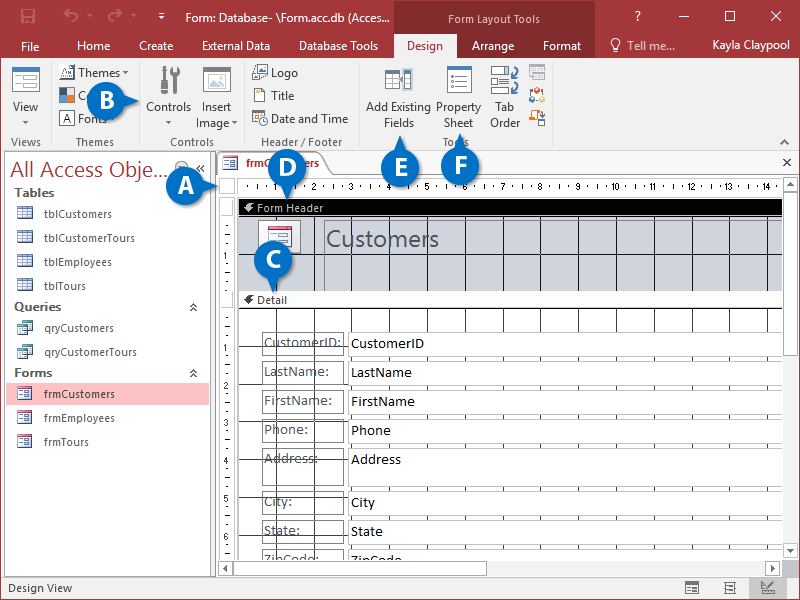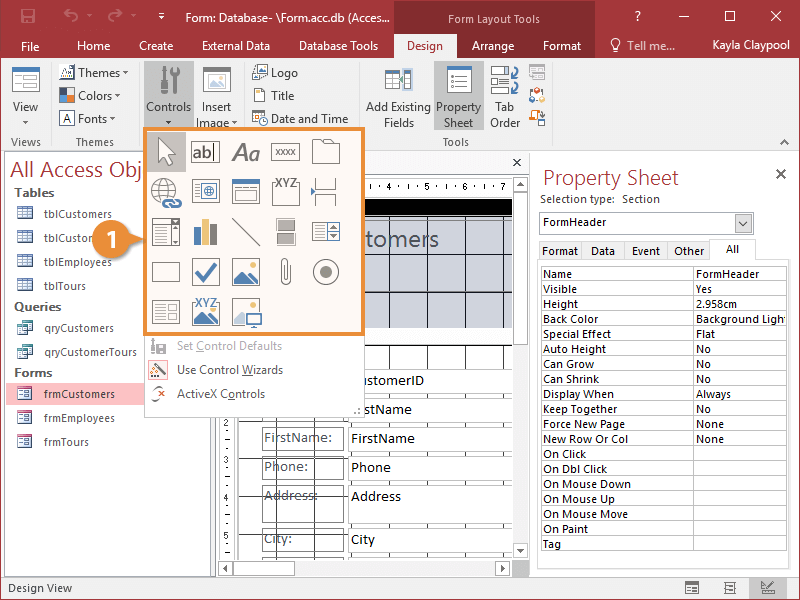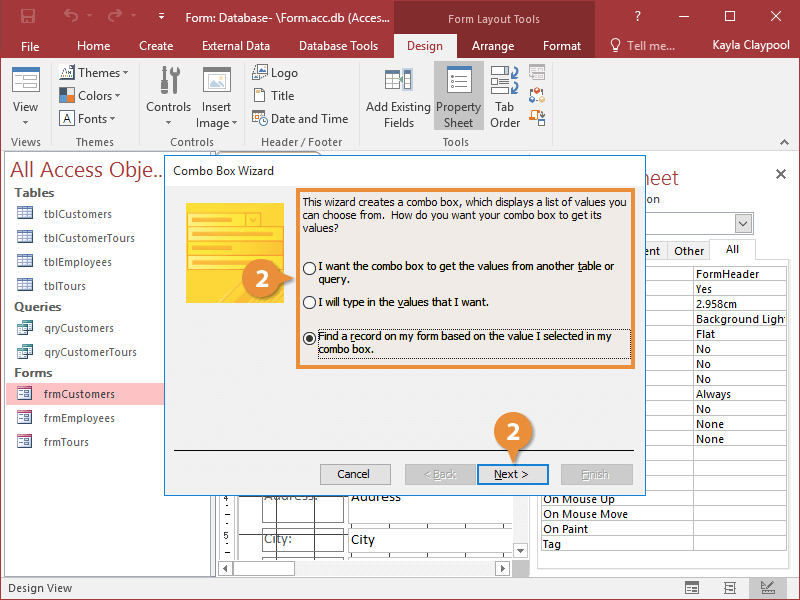| Select |
Click this button and then click the control you want to select. To select multiple controls, click this button and hold down the Shift key as you click each control, or drag a rectangle around all controls you want to select. |
| Text Box |
Creates a text box that displays information from a table and query. You can also use text boxes to simply enter text. |
| Label |
Creates a static text label that is the same for every record, such as a heading. Most controls already have a text label attached. |
| Button |
Creates a button that runs a macro or Visual Basic function. |
| Tab Control |
Enables you to create tabs (like the ones found in some dialog boxes) to include more than one page of controls on the form. |
| Hyperlink |
Inserts a link to a webpage or file. |
| Web Browser Control |
Inserts a control that allows the database user to access the computer’s web browser. |
| Navigation Control |
Creates a control that allows the form to be navigated. |
| Option Group |
Creates a box around a group of option buttons so that the user is only allowed to make one selection from the group box. |
| Insert Page Break |
Inserts a page break. |
| Combo Box |
Creates a drop-down box that lets the user enter text or select an item from a list of options. |
| Chart |
Inserts a chart. |
| Line |
Enables you to draw a line. |
| Toggle Button |
Creates a toggle button that allows you to display and enter data from a Yes/No field. |
| List Box |
Creates a box that lets the user select an item from a list of options. |
| Rectangle |
Enables you to draw a rectangle. |
| Check box |
Creates a box that is checked or unchecked. Use to enter data from a Yes/No field. |
| Unbound Object Frame |
Inserts an OLE object that is not bound to a field in the current database. Use an Unbound Object Frame to display information from an external source or program, such as a spreadsheet, graphic, or other file. |
| Attachment |
Provides the option to include an attachment. |
| Option Button |
Creates an option button (or radio button) that allows the user to make a single selection from two or more choices. Option buttons are normally used with the Option Group control. |
| Subform/Subreport |
Inserts another form within the main form. Use when you want to show data from a one-to-many relationship. |
| Bound Object Frame |
Inserts an OLE object that is bound to a field in the database. Use Bound Object Frames to display pictures or other OLE information in the database. |
| Image |
Displays a picture or graphic file that you specify. |



